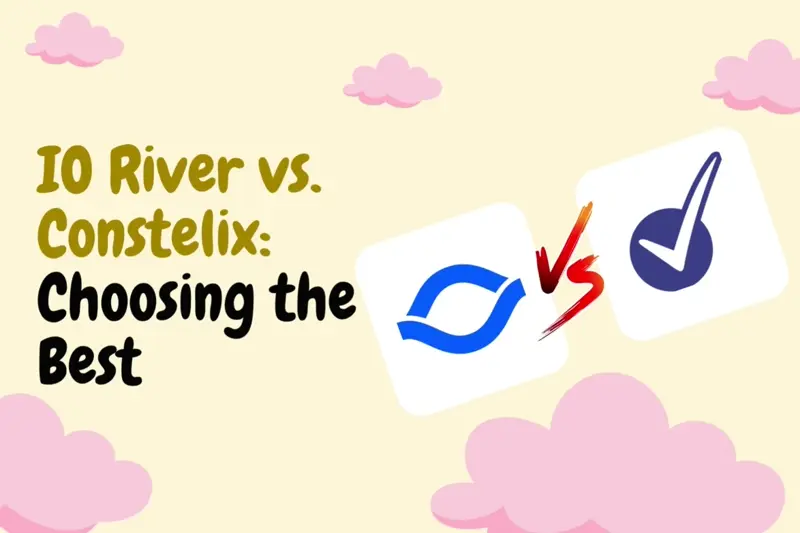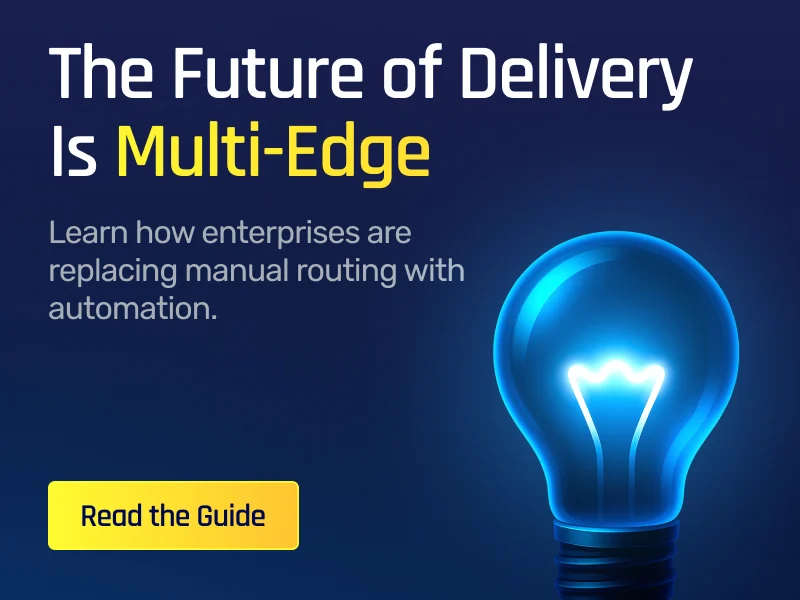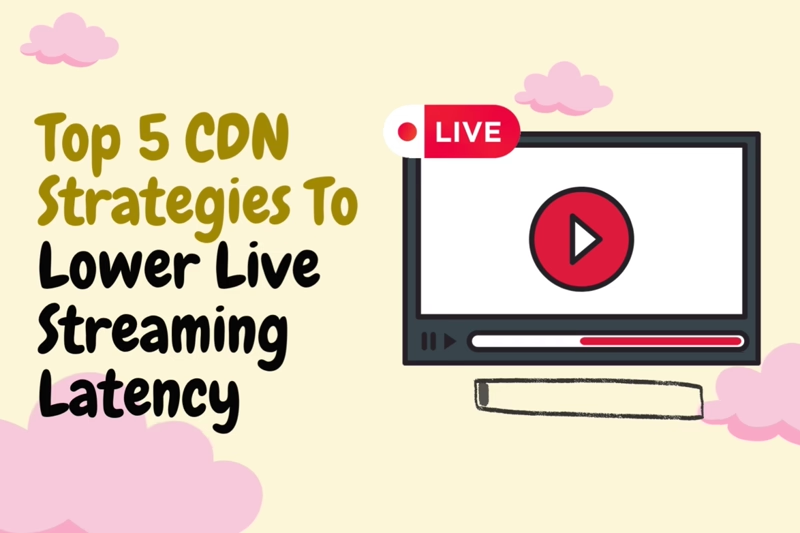IO River Vs Constelix: Choosing The Best
Compare IO River and Constelix to find the best multi-CDN solution for fast, reliable, and cost-efficient traffic control.

You have a launch night. Traffic jumps in two regions. One CDN slows down. Your team needs a clean way to move traffic, keep the site fast, and control cost without drama.
That is where a strong multi CDN solution helps. Two names show up often.
- IO River aims to give you one place to run the whole edge.
- Constelix gives you a powerful DNS toolkit that you can shape yourself.
You want the fastest path from plan to stable production. Let us walk it together in simple steps.
Key Answers
- If you want one control plane with simple policies, unified config, and no extra hop, choose IO River for your multi CDN strategy.
- If you want to craft routing at the DNS layer and you enjoy full hands on control, choose Constelix and build your own logic.
- If your goal is fast rollout, consistent security, and easier operations across multi CDN providers, IO River keeps the load lighter.
- If your goal is custom geo and network rules with granular DNS level knobs, Constelix gives you the parts to assemble your plan.
How IO River Works
IO River sits above your CDNs. It makes traffic decisions out of band, so it does not add a new processing hop. You point a CNAME at IO River and it answers with the right CDN for that user and moment.
How you set it up
- Connect two or more CDNs that you already use or want to try.
- Define services, origins, cache rules, and headers in one place, or just press one button to migrate from your existing stack.
- Create traffic policies that fit your goals.
- Update your public CNAME to the IO River service name.
- Ramp traffic by region or audience with simple weights.
- Watch live results and adjust without touching each vendor portal.
Policies you can use
You will often use a mix of four patterns so you avoid one size fits all thinking.
- Static split for contract or capacity targets in a region.
- Performance first dynamic routing that reacts to live speed.
- Cost first routing with a clear performance floor you set.
- Region pinning when a market needs a fixed provider for legal or payment reasons.
Monitoring and signals: IO River can take in synthetic tests and real user data. This is useful for multi CDN monitoring when last mile conditions change during the day.
It lets the platform trigger multi CDN switching safely.
Unified operations
- Purge cache once and reach all CDNs at the same time.
- Manage certificates and keys in one place.
- Apply one WAF and one rate limit policy across vendors.
- Ship edge code once and have it run across your footprint.
Automation
- A single API and one Terraform provider manage the full surface.
- You can place this into your CI pipeline and keep drift low.
- You can roll back with versioned configs and keep history clean.
You reduce the daily swivel chair work. You cut long checklists when you change anything on the edge. You get a stable multi CDN architecture with fewer moving parts to track.
{{promo}}
How Constelix Works
Constelix is an authoritative DNS platform with traffic tools you can combine. It answers DNS queries fast and it lets you shape what answer goes to which user.
How you set it up
- Create record pools that point at your CDN endpoints.
- Turn on latency checks for pools if you want speed based decisions.
- Build Global Traffic Director maps for region based answers.
- Add GeoProximity when you want location to drive routing.
- Use IP Filters to segment by country, city, ASN, or subnet.
- Define failover and health rules so bad targets get removed quickly.
How decisions happen
All logic runs at query time inside DNS. The user asks for your host. Constelix looks at your rules and answers with the record that fits that user by region, network, or measured pool latency.
Monitoring and insights: You can see query analytics and alerts on traffic spikes or drops. You can also feed your own checks to adjust which records are active.
Automation
- A primary Terraform provider manages DNS objects and records.
- A separate multi CDN provider manages the multi CDN config objects.
- You can pair these with your own scripts against each CDN API.
You get full control of routing rules at the DNS layer. You can craft very fine logic. You also accept that security, cache rules, and certificates keep living inside each CDN portal you run.
Core Differences Between IO River And Constelix
There are a lot of differences, but the main ones lie in their approach:
- IO River sits above the CDNs as a control plane and does not insert a new hop. Constelix works inside the DNS layer and answers queries with the target you choose.
- IO River gives you business level policies like performance first and cost first. Constelix gives you network level rules like region, proximity, and IP based answers.
- IO River lets you purge, secure, and script once for all providers. Constelix lets you steer traffic in DNS, then you manage WAF, cache, and TLS inside each CDN.
- IO River is one provider for the whole platform surface. Constelix splits DNS objects and multi CDN objects into separate providers, while the CDNs have their own APIs.
Core Use Cases IO River Vs Constelix
Use this table to match goal to platform. Keep your use case simple and precise.
How IO River And Constelix Support Multi CDN Strategy
You need a clear plan that goes from plan to metrics. Below is the full loop.
Keep it tight and repeatable.
1. Plan the architecture
- Pick two regions and two multi CDN providers to start.
- Define success as p50 and p95 TTFB targets, error rates, and cost per million requests.
- Decide your rollback triggers in advance.
2. Prepare routing logic
- IO River
- Start with a static split in both pilot regions.
- Turn on performance first for the region that shows more variance.
- Add cost first in the other region with a performance floor you accept.
- Constelix
- Build two pools per region.
- Turn on latency checks for both pools.
- Add a simple regional map and a narrow GeoProximity rule for one city to validate.
3. Connect monitoring
- IO River
- Feed synthetic probes and real user measurements if you have them.
- Use policy insights to see who was fastest per city and hour.
- Constelix
- Use query analytics and latency history to see which pool wins.
- Alert on spikes or drops that suggest problems.
4. Execute multi CDN switching safely
- Start at ten percent in one region.
- Hold for a few hours while you verify cache keys, cookies, headers, and TLS.
- Move to fifty percent, then to your steady target.
- Repeat the same plan in the second region.
5. Operate and improve
- IO River
- Purge once when you ship.
- Shift policy weights per region as needed without redoing vendor configs.
- Keep WAF and rate limits consistent across vendors.
- Constelix
- Update DNS rules as you learn.
- Keep WAF, cache, and certificates aligned across vendors with your own runbooks.
- Document per vendor differences so on call engineers move faster.
6. Prove value
- Collect the same KPIs you set in step one.
- Share two wins. One for speed and one for cost.
- Plan the next region while you lock in the basics.
This sequence is a working multi CDN architecture that uses multi CDN monitoring to drive smart multi CDN switching without chaos.
{{promo}}
Can You Have Both
Yes. Many teams mix the two to match skills and timelines. Here are four clean patterns.
- IO River in front, Constelix as primary DNS
You keep your registrar and nameserver flow the same. You point service CNAMEs at IO River. IO River handles policies and unified ops. You keep DNS control stable. - Constelix steering into IO River services
You create different IO River services per audience. Constelix routes users to the right service by region or network. IO River then picks the best CDN in that slice. - Constelix for static assets and IO River for dynamic traffic
You send static assets through pools and Geo logic in DNS. You send dynamic requests through IO River to keep security and edge logic consistent across vendors. - Migration bridge
You start with Constelix pools that point at two CDNs. You then insert IO River behind those records for one region. You test policies and unified purge at small scale, then expand.
In all four, pick a single source of truth for cache keys, headers, and WAF rules. Avoid split brains. Write a short handbook so everyone knows where to change what.
Conclusion
Both platforms can power a strong multi CDN strategy.
- If you want one place to operate and measure your edge across many vendors, IO River keeps life simple.
- If you want fine control inside DNS and are happy to wire the rest, Constelix gives you the pieces.
Start small, let data guide routing, and keep your runbooks lean. You will protect uptime, improve speed, and keep spend in check.
FAQs
What is a multi CDN solution in simple terms?
It is a way to run more than one CDN at the same time so you can route users to the best option for speed, uptime, or cost.
Will DNS time make my site slower?
DNS time is usually a small part of the full page load. The big gains come from faster content delivery, better peering, and right sized caching.
What is multi CDN monitoring in practice?
It means watching user speed, health checks, DNS signals, and vendor status so you can adjust routing or policies. You use that data to drive multi CDN switching when a path slows down.
Can I run IO River and Constelix with a small team?
Yes. If you want fewer moving parts, IO River helps by unifying daily work. If you want deep custom rules, Constelix works well when you already have DNS and network skills.
How do I avoid vendor lock in?
Keep your edge logic in code, store configs in your repo, and use open APIs. A strong multi CDN strategy makes it easier to change providers when you need to.


.png)
.png)

.png)





